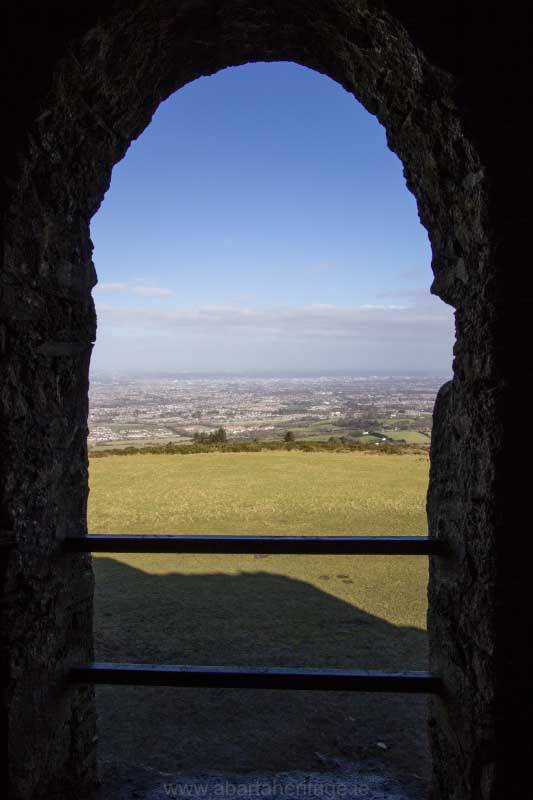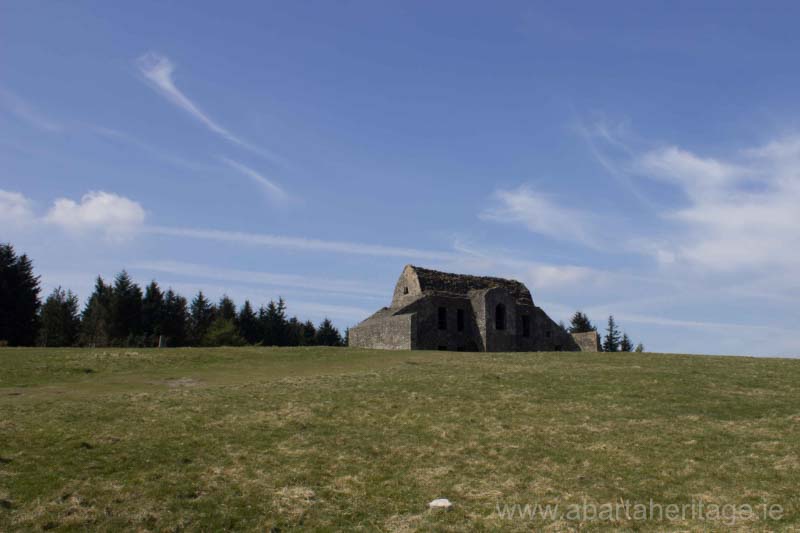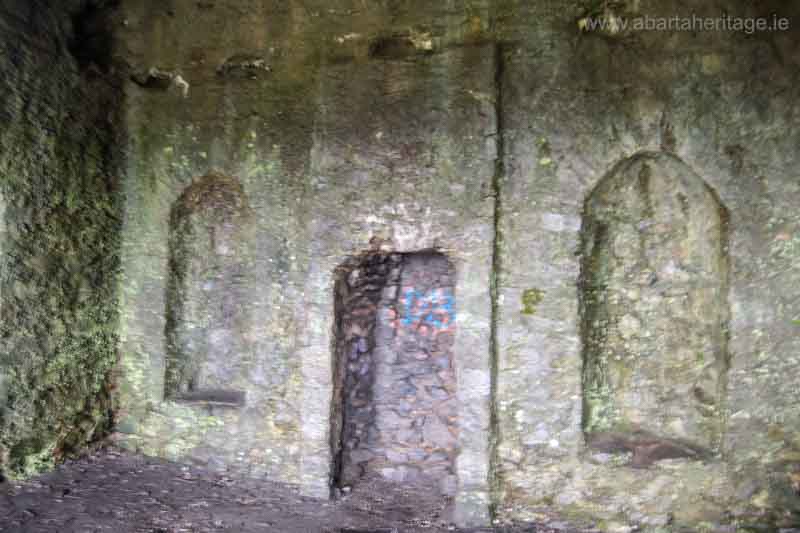Historical description of the Hellfire Club by William Domville Handcock, 1899
William Domville-Handcock also provided an important description of the Hellfire Club and deer park at the end of the nineteenth century:
‘This house, now ruined, was built by Speaker Conolly about the year 1725, shortly after he purchased all the estate of the Duke of Wharton in this neighbourhood. It was said that he built it as a point of view from Castletown, where his mansion was. When built, it could only be seen from thence when the sun shone on it, as the hills behind overshadowed it. It was then called “Conolly’s Folly.” Mr Cooper, who visited it in 1779, says it was then out of repair… ‘ (8)
Domville-Handcock also provides detail on the deer park that surrounded Montpelier Hill:
‘I believe the house to have been built as a hunting lodge. It stands nearly in the centre of an extensive walled-in deer-park. Many portions of the wall are still to be seen; it surrounded nearly the whole hill, and the park contained upwards of 1,000 acres.’ (9).
Domville-Handcock’s description of the Hunting Lodge itself is particularly useful for its level of detail:
‘The house consisted of two large rooms and a hall on an upper floor. These rooms are sixteen feet square, each of them lighted by two tall windows, almost eight feet by three feet six inches, commanding a most extensive and magnificent view. There are two arched niches at each side of the rooms, with large fireplaces. Over the parlour and hall there was a small loft, but none over the drawing room. The hall door was reached by a lofty flight of stone steps; these, with most of the other cut granite stones about the house, were taken away at the time of the building of Lord Ely’s hunting-lodge, lower down the hill. Underneath the drawing-room was the kitchen, where the jambs of the great fireplace, ten feet wide, are still to be seen. There was a servants’ hall at the other side, and there were two rooms built out at each end of the house. There were also two small apartments in a return opposite the hall door. The windows all face the north, for in the rear there are only a few narrow slits like embrasures. A semi-circular courtyard was in front with a gate in the centre. The walls are all very thick, built carelessly of rubble stone. The arched roof is of stone, as are the floors’ (10)
Domville-Handock went on to describe its condition as:
‘… a mere ruin, each winter hastening its decay. It is only used as a shelter for cattle. The lower rooms are half filled with manure and rubbish. The stone staircase, that I can remember inside, is all gone and the cattle can no longer ascend to the drawing- rooms as they used to do. The only way of getting to these rooms now is by climbing up the front wall to the hall-door; while the room in the return is almost inaccessible, except to an active climber’ (11)





